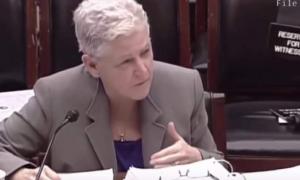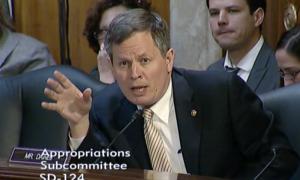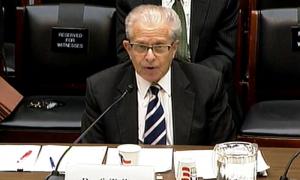
…Solar and wind delivered just 9% of global electricity in 2020. Heating, transport and vital industrial processes account for much more energy use than electricity. This means solar and wind deliver just 1.8% of global energy supply.
Bjorn Lomborg, Copenhagen Consensus
Solving climate change is the most complex and difficult challenge humans have ever undertaken. So it would seem that a rational and unbiased approach would be essential to getting it right. After all, we are talking about fundamental shifts in how we create and use energy, with unprecedented impacts on our lives and the lives of generations to come.
But we aren't getting it right.
What we are getting — at least from fanatical green energy proponents — is a dogmatic and coercive push to accept wind and solar as THE SOLUTION, along with other "approved" green energy sources.
In the dogma of these fanatics, non-renewable energy sources, primarily fossil fuels, are to be removed from human use, left in the ground. The green religion allows no room for dissent. Those with different views face shaming, bullying and demonization.
But the renewables-only approach is simply not working. After massive investments, government mandates and pro-green government policies, wind and solar remain a small fraction of global energy consumption. Fossil fuels still dominate. Emissions continue to increase. The United Nations Intergovernmental Panel on Climate Change continues to warn that nations are not meeting their obligations.
It should be obvious that we are facing a flawed global approach to solving climate change.
As energy expert Mark P. Mills, writes in Offshore Magazine:
During the past two decades, global governments have spent over $5 trillion to avoid using fossil fuels. But oil, natural gas, and coal still supply 84% of global energy, just two percentage points lower than 20 years ago. Meanwhile, burning wood supplies more global energy than solar power. Oil still fuels nearly 97% of global transportation. Crop-derived liquids supply most of the rest with batteries powering under 1%.
Bjorn Lomborg, president of the Copenhagen Consensus, offers a similar assessment in the New York Post:
Even with huge subsidies and political support, solar and wind delivered just 9% of global electricity in 2020. Heating, transport and vital industrial processes account for much more energy use than electricity. This means solar and wind deliver just 1.8% of global energy supply.
While these numbers will continue to change as global supply and demand evolves and updated figures are released, it is apparent that renewable energy has a very long way to go to displace traditional energy sources.
Clearly, the world is not ready to give up on fossil fuels, even if many in environmental groups, government circles and scientific communities are. Even some of the most pro-green governments in Europe today find themselves firing up retired coal plants as they struggle to disengage from Russian natural gas pipelines. Despite Germany's green revolution (leading to some of the highest consumer energy costs in the world) that nation, and others, still need reliable, readily available, non-intermittent energy that wind and solar cannot provide.
When India faced dangerous scorching temperatures this summer, coal plants that had been retired in favor of new "green" technology were put back to work to meet soaring energy needs. The nation acknowledged its "green" energy plan was premature.
The only sensible approach to climate change must include fossil fuels at least for the next several decades. And unless we get busy cleaning up those fuels, emissions will continue to increase and any hope of achieving climate targets will be dashed.
Boilermakers know that carbon capture, use and storage (CCUS) technologies work. We have been part of successful projects in energy production that remove carbon dioxide for safe underground sequestration as well as productive use. With the level of financial and policy commitment that renewables have received, CCUS could well be on the way to removing carbon emissions at greater scale.
CCUS-enabled fossil fuels, along with hydrogen, renewables, nuclear, and direct air capture can, together, carry us toward a sustainable, low carbon and net-zero future. Wind and solar cannot go it alone. That should be abundantly clear by now.
It's time for politicians and other world leaders to step up, speak out and support a more rational approach to climate action. We need to make the best use of the energy sources we have today, even as we seek alternate sources including hydrogen and nuclear fusion.
We cannot continue to follow the path of green energy fanatics to our economic ruin and failed climate action. Their zealotry for wind and solar to the exclusion of fossil fuels, and nuclear for that matter, stands in the way of real progress.
An all-of-the-above energy policy remains our best strategy to effectively solve climate change.




















0 Comments